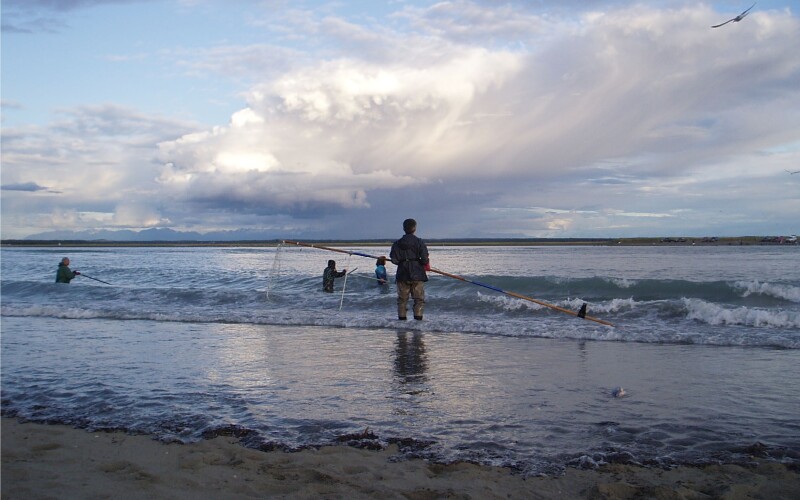As soon as this summer, Cook Inlet commercial fishermen may be allowed to fish using dipnets to catch sockeye salmon. According to the Peninsula Clarion, the State Board of Fisheries added the gear type to fishing regulations.
This decision came up at the board’s Upper Cook Inlet Finfish meeting following implementing other new restrictions on commercial fisheries. The board and members of the State Department of Fish and Game (AFDG) expressed heavy interest in exploring new gear types within commercial fisheries to avoid the harvest of king salmon. The Upper Cook Inlet Finfish Meeting also included a letter on the proposed federal management of the Cook Inlet Exclusive Economic Zone (EEZ).
The proposal to allow the use of dipnets was the only approval the board made at the meeting; however, interest in studying shallower-set gillnets, reef nets, and beach seines was expressed.
Commissioner Doug Vincent-Lang of ADFG shared, “we are interested in looking for different mechanisms whereby the setnet fishery can operate in a manner that harvests sockeye but reduces the king salmon intercept.”
The Clarion wrote that the proposal approved by the board was amended from a submission by Chris Little and is included as part of the Kenai River Late-Run King Salmon stock of concern action plan passed by the board earlier in the meeting. If the stock were delisted as a stock of management concern, it would be removed from regulation.
Before dipnets can be used in Cook Inlet commercial fisheries, the Commercial Fisheries Entry Commission would need to approve the action and include gear type in commercial fishing permits. The board stated that this would “get the ball rolling,” but no timeline was defined for the approval.
The proposal that was passed states that from June 20 to July 31, commercial set gillnet permit holders in Cook Inlet can use dipnets as an alternative gear type, and as described in the action plan, openings may occur outside the specific openings, which would also require a projection of more than 14,250 large king salmon via an emergency order by AFDG. And finally, no more than three 12-hour openings will be allowed each week.
Further discussion was made on whether this number of openings was too low. However, the board agreed on that specific number based on concern over the unquantified impact of such a radical change in methodology within the fishery.
During the meeting, board member Mike Wood stated, “Thinking outside the box is the way of the future on this one. Whatever it takes to be able to allow there to be some selective harvest with no termination of kings on that beach, I’m all for it- any creativity that can happen there.”







